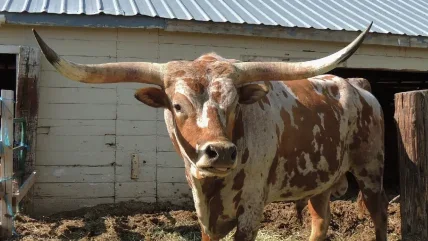
The price of heavy Texas steers improved in February, with seasonal weights rising to $26 where they remained through March. Colorados also increased in price with 62/64lb selections selling at $25–$26 at the end of March. Interest in hides within the automotive sector picked up a little and prices did improve, although buyers were resistant to higher levels. Heavy native steers ended the first quarter at $35.
In the last Leather International report, it was noted that Holsteins were one of bright spots at the start of the year; by March, their good sales had waned. Poor demand for upholstery squashed any good interest for dairy cows and prices started to sink by the end of the month.
Export figures
In February, rawhide sales averaged 429,525 weekly, a 5% increase from the average in January and 12% higher than February last year. In fact, it was the highest average for the month since 2013. Weekly rawhide shipments averaged 448,300, 11% more than January’s average and 20% higher than February 2022.
Weekly wet-blue sales averaged 122,525 in February, 18% higher than January and 48% higher than February 2022. Weekly wet-blue shipments averaged 150,250, a 50% increase from the January average. It is also 43% higher than the February 2022 average.
Cattle numbers
Cattle and calves on feed for the slaughter market in the US for feedlots with capacity of 1,000 or more head totalled 11.6 million head on 1 March 2023. The inventory was 4% below of what was recorded on 1 March 2022. Placements in feedlots during February totalled 1.73 million head, 7% below 2022.
Net placements were 1.68 million head. During February, placements of cattle and calves weighing less than 600lb were 345,000 head, 600–699lb were 315,000 head, 700–799lb were 470,000 head, 800–899lb were 424,000 head, 900–999lb were 130,000 head, and 1,000lb and greater were 50,000 head.
Marketing of fed cattle during February totalled 1.74 million head, 5% below 2022. Other disappearance totalled 58,000 head during February, 2% below 2022.
Beef exports
US beef exports were record-breaking in 2022 but slowed late in the year, according to data released by the USDA and compiled by the U.S. Meat Export Federation. This trend continued in January as shipments were well below the large totals from a year ago.
Beef exports declined to several major destinations in January, though shipments increased sharply to Mexico, the Dominican Republic, the Philippines and Africa.
January volume fell 15% year-overyear to 100,942mt, valued at $702.3m (down 32%).
Beef inventories swelled in some key markets near the end of last year, contributing to a challenging environment for US exports.
Hide market
After Chinese New Year, the US hide market was more optimistic and some sellers were impatient about quickly driving prices higher. It turns out their enthusiasm was short-lived, as was the firmer trend of the market.
On the optimistic side, the auto leather sector was busier than it had been, although customers have remained quite resistant to rising prices. On the other hand, while it seemed the worst was behind us with regard to the footwear sector, the lag in demand dragged on through the first quarter. Global demand and consumption were expected to start improving in Q2, but economic forecasts and product orders made it clear this would have to wait until sometime in the second half of 2023.
One of the issues for some sellers was the weight of hides, which were trending heavier throughout most of the first three months. This meant that regular-weight steers were in shorter supply, allowing packers to edge prices a little higher in February.
Alas, what looked like the start of a promising period has fizzled out. As packers continued to push for higher levels, customers became increasingly reluctant to buy and certainly not at higher prices. The few weeks of a slightly firmer market turned out the be a ‘dead cat’ bounce that didn’t last all that long.
Moreover, it wasn’t a select group of customers who refused to pay more – it was generally all of them. The lack of common ground between buyers and sellers when it comes to price was the norm for most of March, and its therefore not surprising that export sales were far from healthy.
While not as problematic as it was in 2021, shipping was again causing issues for hide sellers. Ocean freight carriers are idling a growing share of their capacity and cancelling some sailings, on top of the decline in demand. The increase in blank sailings has led to a shortage of empty containers, as they are all stacked up in China. In fact, the Journal of Commerce reports that US container imports from Asia hit a three-year low in February.
Another market focus has been cattle supply. Some pointed to the projected shrinkage of the cattle herd as a reason for optimism, and that lower supply would help the hide market. Supply can give the market an indication of direction but it’s not going to happen without demand.
For a few weeks, it seemed that even lower prices could not entice customers to buy. And, while slaughter was slightly declining each week, by the last week in March it had popped back up to 651,000 – not welcome news for hide sellers. That said, packing plant capacity utilisation at the end of March was estimated to be 85.2% compared with 88.1% last year.
The outlook going forward is not very positive. Numerous sources felt that prices would have to go lower for sellers to move all the hides produced in the US. Moreover, leather business is just not good right now, and the market is likely to remain under pressure for the foreseeable future.


